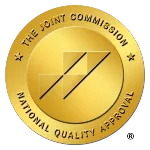Links Between Trauma as a Child and Hypervigilance as an Adult
You may already be aware that hypervigilance refers to an elevated state of awareness or alertness. Often, hypervigilance stems from traumatic events, such as sexual abuse, child abuse, or war. Those who experience traumatic events as the brain develops often experience lasting effects, one of which can be hypervigilance.
Unfortunately, symptoms like hypervigilance don’t go away when you ignore them. Overcoming hypervigilance requires teaching your body and mind that they are finally able to feel safe. The trauma treatment programs at Catalina Behavioral Health strive to do just that.
Through evidence-based trauma treatment, you can heal from hypervigilance and other symptoms of trauma disorders. Our resource from Catalina will explore the links between adult hypervigilance and childhood trauma, how to identify common symptoms of hypervigilance, possible consequences of hypervigilance, and treatment options.
Confidential Trauma and PTSD Assessment
How Childhood Trauma Leads to Adult Hypervigilance
Childhood trauma often means that you grow up on high alert. This leads to a dysregulated nervous system that is seemingly always looking out for potential threats, even when it’s not necessary.
Although we develop hypervigilance to keep us safe, experiencing constant stress hormones when there’s no real threat underway can have a serious impact on your life, mental health, and even your physical well-being.
The signs of repressed childhood trauma can take different forms. People who experienced persistent trauma as a child may resonate with the symptoms of Complex PTSD, a mental health condition stemming from ongoing or repeated trauma.
Complex PTSD (C-PTSD) is characterized by PTSD symptoms and additional, more severe symptoms. Two examples of complex trauma are childhood abuse and domestic violence.
Those who survived abuse as a child are often hypervigilant people. If your primary caregivers or environment were unpredictable or unsafe as a child, it makes sense that your body and mind remain on high alert. That being said, it’s important to note that anyone who has experienced trauma can develop hypervigilance regardless of the type of traumatic event.
Hypervigilance in Post-Traumatic Stress Disorder (PTSD) and Other Mental Health Conditions

Hypervigilance is a well-known potential symptom of PTSD and C-PTSD. Whether a singular traumatic event or ongoing trauma is what leads to hypervigilance symptoms, addressing the underlying cause matters.
People with other disorders can also experience hypervigilance. For example, people with anxiety disorders like generalized anxiety disorder (GAD) or panic disorder may experience hypervigilance.
Identifying the Signs of Hypervigilance
How do you identify hypervigilance in yourself? PTSD hypervigilance is often marked by signs such as the following.
- A heightened sense of danger, marked by feelings of fear or anxiety.
- Epinephrine-induced physiological symptoms occur as a result of real or perceived threats (e.g., sweating, shaking, elevated blood pressure, dilated pupils, or rapid heartbeat).
- An increased startle reflex. You may get scared or react more intensely than others when startled.
- Difficulty relaxing or winding down.
- Anxious thoughts.
Many people affected by hypervigilance also experience PTSD symptoms like disturbed sleep or difficulty sleeping, fatigue, paranoia, and loss of concentration. These can be a result of being in a hyper-aware state where you’re always looking out for hidden dangers.
What are the Consequences of Hypervigilance?

Hypervigilance can seriously impact a person’s daily life, body, and mind. In addition to hypervigilance itself, the affected person may experience other serious concerns that alert them of the need for treatment.
For example:
- Agoraphobia. Some people experiencing hypervigilance may develop an anxiety disorder called agoraphobia. Agoraphobia refers to an irrational fear of being in open or unfamiliar places and situations that could cause panic, embarrassment, or helplessness. Sometimes, this results from obsessive avoidance of potential threats.
- Problems in relationships and social interactions. Those experiencing hypervigilance may have problems in relationships. You may be extremely responsive to small shifts in tone or actions, fear that the other person will leave or is being unfaithful, or have social anxiety symptoms in day-to-day interactions.
- Physical health issues. When you experience an elevated stress response on an ongoing basis, it can cause long-term physical symptoms and health problems. For example, an increased risk of hypertension, heart attack, stroke, chronic fatigue, chronic pain, and gastrointestinal distress.
The good news is that recognizing hypervigilance is often the first step toward getting help. If you notice that you experience hypervigilance or other symptoms of PTSD, the best thing you can do is reach out for mental health treatment support.
Working With a Mental Health Professional for Childhood Trauma and Hypervigilance
With the right approach to treatment and therapy addressed at childhood trauma, you can overcome hypervigilance and associated psychological disorders. A broad range of therapies and treatments can be used to help individuals overcome past trauma and the symptoms that result from it.
Common PTSD and trauma treatments include but aren’t limited to the following.
- Eye movement desensitization and reprocessing (EMDR).
- Cognitive processing therapy (CPT)
- Dialectical behavioral therapy (DBT).
- Cognitive behavioral therapy (CBT).
- Medication management.
- Prolonged exposure therapy.
- Family therapy.
Catalina Behavioral Health provides trauma-informed care for a variety of mental health conditions. These include but aren’t limited to trauma disorders, anxiety disorders, depression and other mood disorders, obsessive-compulsive disorder, and borderline personality disorder.
Substance abuse can also be more common in those who experience trauma. If you have a co-occurring substance use disorder, our dual diagnosis programs can help.
How Our Trauma Treatment Programs Help

At Catalina Behavioral Health, we offer multiple types of trauma treatment programs. The inpatient program at Catalina Behavioral Health is our most intensive level of care. Inpatient trauma treatment involves 24/7 supervision and a full daily schedule of therapy and other treatment services.
We also offer several levels of outpatient care. These include partial hospitalization, intensive outpatient, and outpatient programs for trauma. Outpatient trauma treatment can be ideal for clients who need to balance work or school with their therapy schedule.
When you contact Catalina Behavioral Health about getting treatment, we can help you decide on the right starting level of care. Our programs use a combination of evidence-based and holistic treatments for trauma so that you can get the benefits of more than one type of therapy.
You will get a personalized treatment plan regardless of your care level at Catalina Behavioral Health. This means that the approach to trauma treatment we use will be specific to you and your unique needs as a client.
Tips on Self-Care for Hypervigilance in Trauma Survivors
Hypervigilant people can and often do require additional self-care. Clients in our programs learn to use coping strategies and other skills to cope with symptoms of hypervigilance on a day-to-day basis.
Here are some techniques our clients have found effective:
- Increased awareness surrounding triggers.
- Progressive muscle relaxation.
- Deep breathing exercises.
- Healthy daily routines.
- Positive self-talk.
Before you leave our facility, we’ll help you make an aftercare plan. Clients may attend ongoing therapy, a support group for trauma recovery survivors, or practice self-care to aid their continued healing process after completing a treatment program. Aftercare can also involve work and education plans.
We help you plan for your future so that a traumatic experience from the past no longer rules it. No matter how long you’ve experienced hypervigilance, healing is possible.
Call Catalina: Learn More About Treatment for Childhood Trauma

If you exhibit hypervigilance symptoms as a result of childhood trauma, Catalina Behavioral Health can help. Our facility offers a full continuum of mental health services in Arizona, from inpatient to outpatient care. When you contact our team, we can verify your insurance coverage, answer your questions, or help you start the intake process.
To get in touch with Catalina Behavioral Health, call our admissions line today. All calls are confidential, and we’re here to help you or your loved one get trauma treatment that works.
Up To 100% of Rehab Costs Covered By Insurance
FAQs Regarding Hypervigilance and Childhood Trauma
Does trauma cause hypervigilance?
Hypervigilance is a hallmark symptom of post-traumatic stress disorder (PTSD) and complex PTSD, both of which are trauma disorders. While people with anxiety disorders, like generalized anxiety disorders, may also experience symptoms like a heightened startle response, hypervigilance is most often associated with trauma disorders. In other words, yes—trauma can and often does cause hypervigilance.
How to heal hypervigilance from childhood trauma?
A variety of evidence-based modes of therapy can help childhood trauma survivors overcome their symptoms. Types of therapy that can help address trauma symptoms like hypervigilance include but aren’t limited to cognitive behavioral therapy (CBT), eye movement desensitization and reprocessing (EMDR), and cognitive processing therapy (CPT).
Some people who have been through a traumatic event will benefit from medication treatment in addition to therapy, whether in the short or long term. Our programs use a comprehensive and individualized approach so that you can get the personalized care you need to heal.
What are the four types of childhood trauma?

There are more than four possible types of childhood trauma. Types of trauma individuals may encounter as a child include but aren’t limited to the following:
- Physical illness (whether it affects the child or a family member, such as a parent)
- Having a parent who experiences addiction or severe mental illness
- Abuse (including physical, psychological, or sexual abuse)
- Community or school violence
- Experiencing or witnessing domestic violence
- National disasters or terrorism
- Natural disasters
- Having a family member in the military
- Death of a loved one
- Bullying
- Neglect
Trauma experienced in childhood can affect a person long-term. Many children who experience trauma develop responses like hypervigilance, which can continue well into adulthood. Without treatment, the effects of trauma can be severe.
Can hypervigilance be cured?
Finding out how much the ongoing stress of hypervigilance affects your body and mind can be scary. Sometimes, people with PTSD and other disorders overcome symptoms to the extent that they no longer meet the criteria for the disorder.
Research on various therapies and approaches to treatment for PTSD and related conditions shows that symptoms can be reduced and, in some instances, eliminated.
Even if hypervigilance doesn’t go away entirely, treatment is worth it. Symptom reduction, support, and developing coping skills are just a few of the possible benefits of treatment.
References
- https://www.ncbi.nlm.nih.gov/pmc/articles/PMC3968319/
- https://www.apa.org/topics/stress/body
- https://www.samhsa.gov/child-trauma/understanding-child-trauma
- https://www.ncbi.nlm.nih.gov/books/NBK224874/





